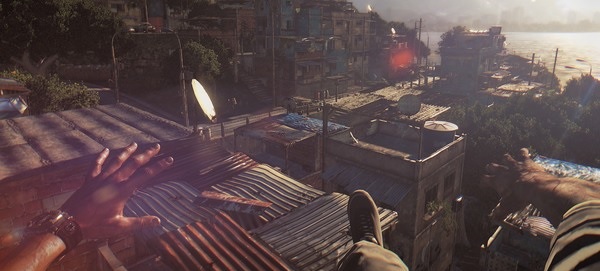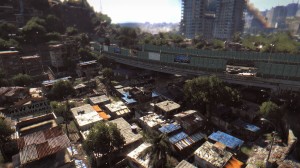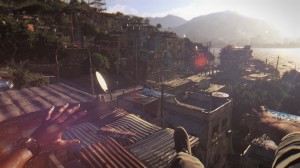Warner Bros today announced Dying Light, a first-person, action survival horror video game with a portentous day-night cycle set in a vast open world. Currently under development by Techland, the game will be available in 2014 for Xbox One, PS4, as well as X360, PS3, and PC.
During the day, players will traverse an expansive urban environment overrun by a vicious outbreak, scavenging the world for supplies and crafting weapons to defend against the growing infected population. At night, the hunter becomes the hunted, as the infected become aggressive and more dangerous. Most frightening are the predators which only appear after sundown. Players must use everything in their power to survive until the morning’s first light.
Kevin Kebodeaux, Senior Vice President, Sales and Operations, Americas, Warner Bros said:
“We are excited to partner with Techland on Dying Light, which is an original gaming experience for next-generation consoles. The partnership with Techland allows us to combine their successful development capabilities with Warner Bros. Interactive Entertainment’s one-of-a-kind publishing expertise to deliver on this title.”
Pawe? Marchewka, CEO of Techland added:
“The next-gen technology allows us to create a truly dynamic open world that features a game-changing day-night cycle. Inventive free running mechanics also allow for nearly unrestricted exploration and weapon-crafting to further enhance the action survival experience.”
Enjoy its first screenshots!

John is the founder and Editor in Chief at DSOGaming. He is a PC gaming fan and highly supports the modding and indie communities. Before creating DSOGaming, John worked on numerous gaming websites. While he is a die-hard PC gamer, his gaming roots can be found on consoles. John loved – and still does – the 16-bit consoles, and considers SNES to be one of the best consoles. Still, the PC platform won him over consoles. That was mainly due to 3DFX and its iconic dedicated 3D accelerator graphics card, Voodoo 2. John has also written a higher degree thesis on the “The Evolution of PC graphics cards.”
Contact: Email








